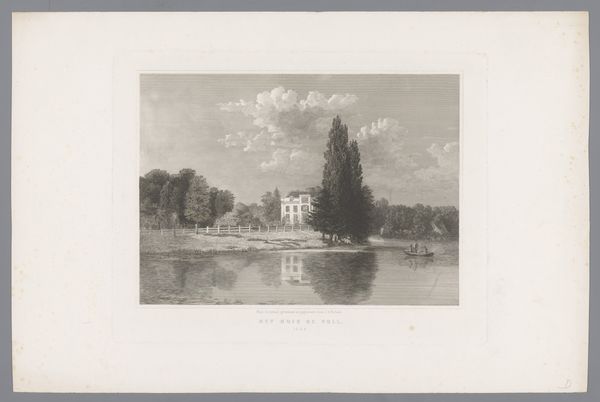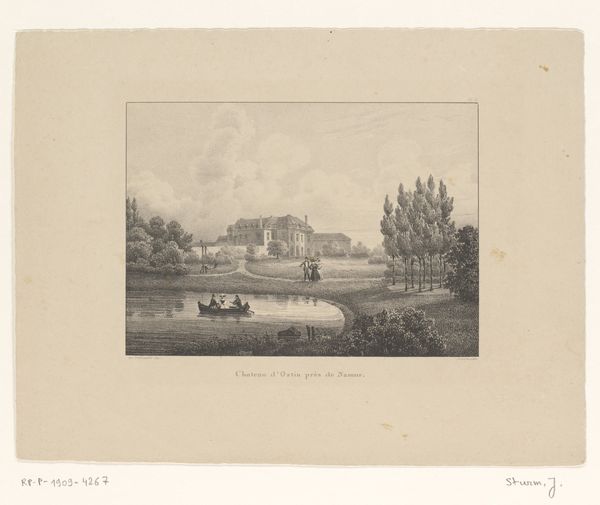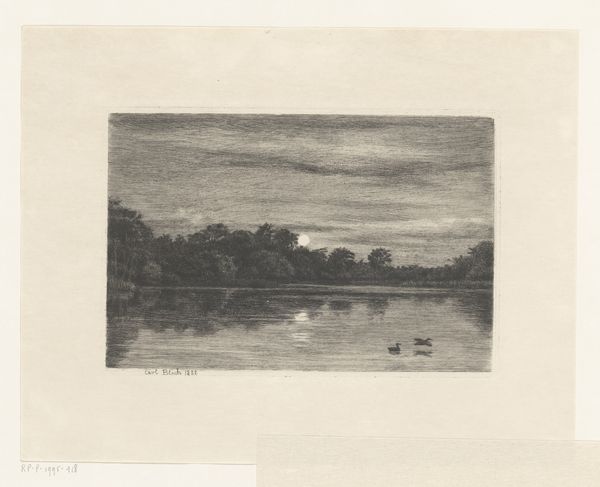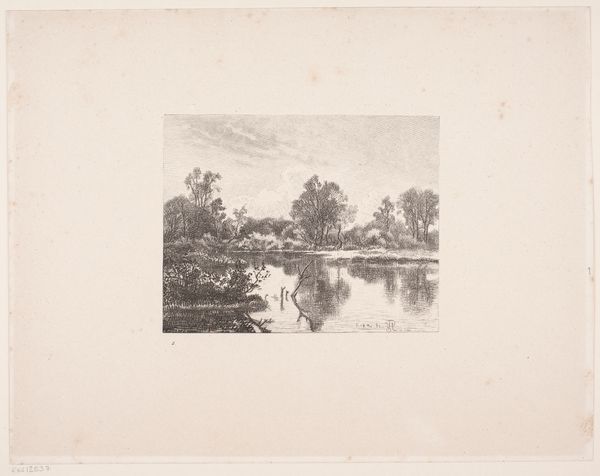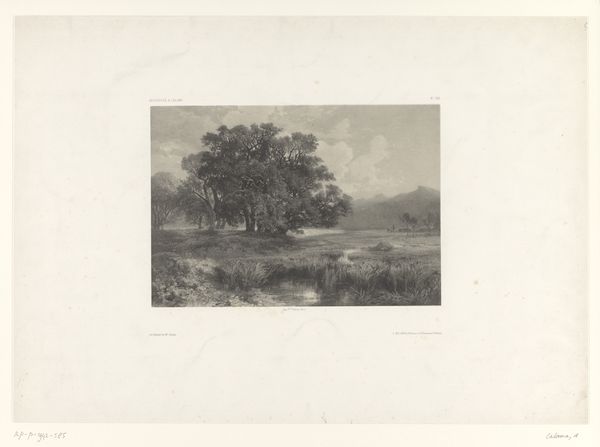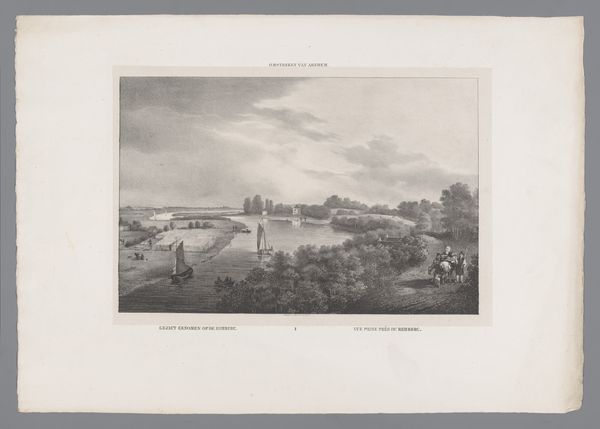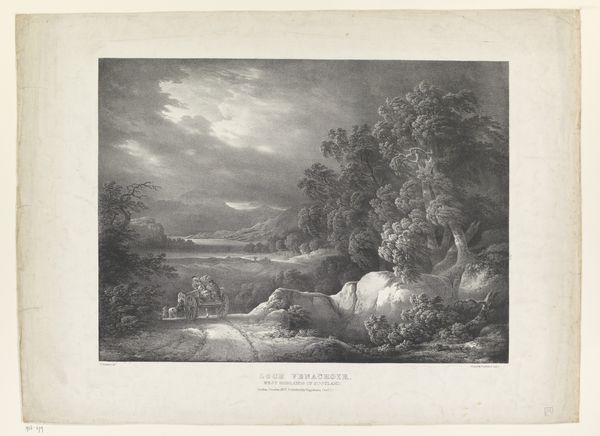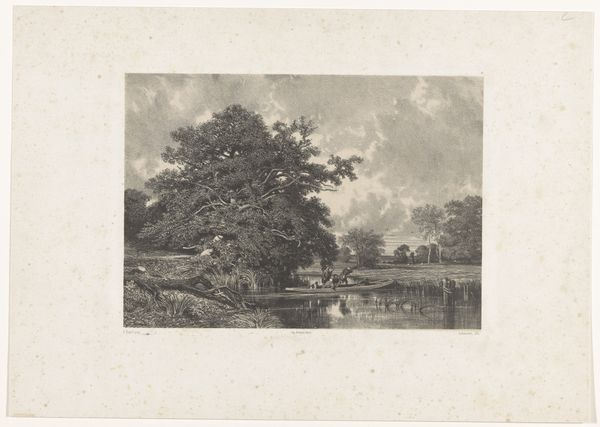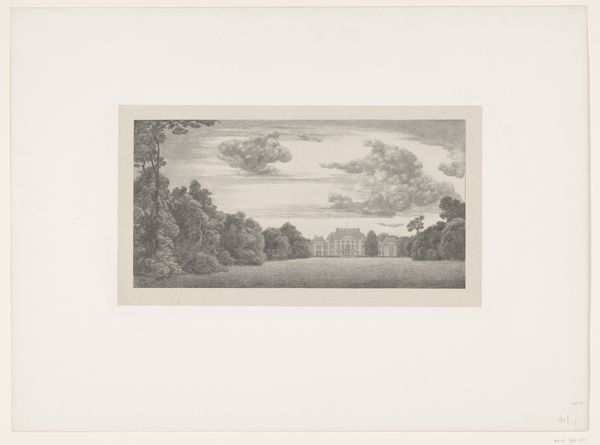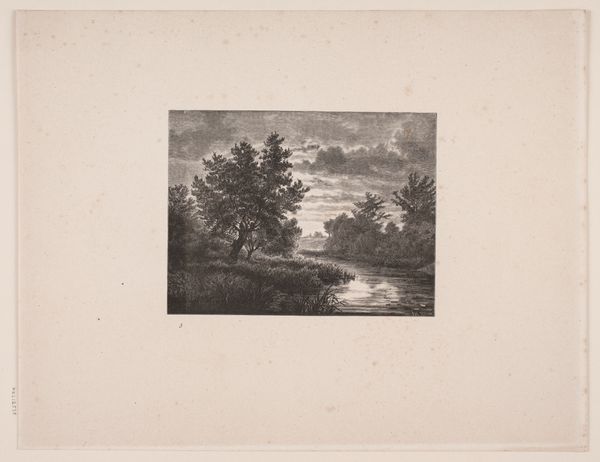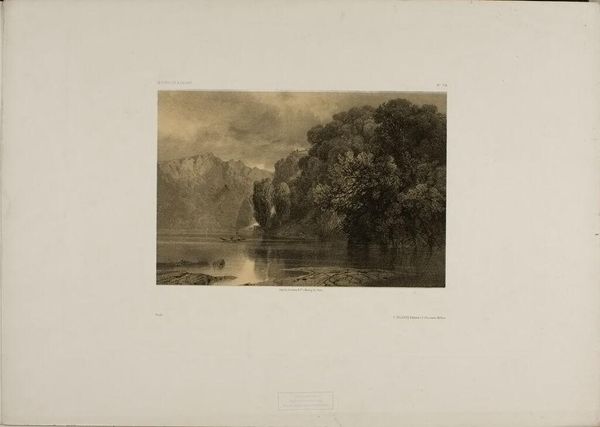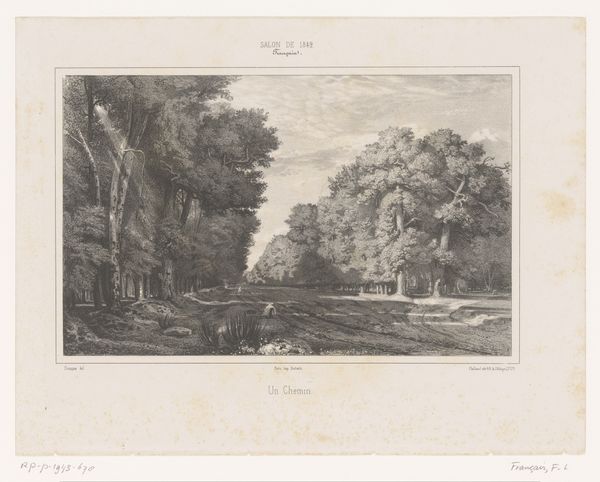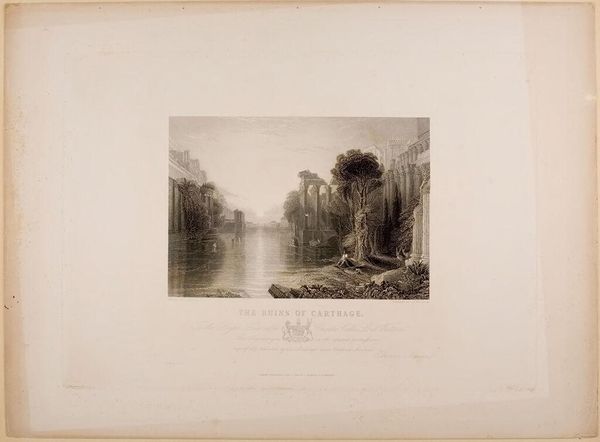
print, etching, paper
#
lake
#
dutch-golden-age
# print
#
etching
#
landscape
#
paper
#
realism
#
monochrome
Dimensions: height 274 mm, width 355 mm
Copyright: Rijks Museum: Open Domain
Curator: The work before us, titled "Gezicht op het Huis de Poll onder Voorst," translates to "View of the House de Poll near Voorst." It’s an etching on paper crafted in 1864 by Johannes Arnoldus Boland. What are your first thoughts on this monochrome piece? Editor: A study in serenity, wouldn't you say? There's something incredibly tranquil about this waterscape. A certain calm. Almost hauntingly still. Curator: The artist captures that feeling rather deliberately, I suspect. Landscape paintings were incredibly popular during this period. Boland may have intentionally tapped into Dutch Golden Age traditions to create a vision of the Dutch countryside, suggesting a sense of rootedness to place. Editor: Absolutely, though there’s more to this “serene” scene. While on the surface, the lake and house embody peace and order, beneath runs a tension between ownership, access, and even ecological impact. Who lived in that house? How was the land managed? These landscapes often elide uncomfortable histories. Curator: That's insightful, as always. Perhaps there is a bit of enforced tranquility there. The reflection on the water is so immaculate, mirroring the building perfectly, there's a degree of idealism presented. But back to the method – can you imagine, spending all that time etching tiny, intricate lines on a metal plate to then make this print? It’s painstaking! Editor: The very process suggests control— a carving out of space, much like how land ownership itself is a form of control. Speaking of control, let's not forget that monochrome here isn’t simply aesthetic, but a choice rooted in the limitations and politics of reproductive technology at the time. Color was a different statement. Curator: True, the lack of color indeed lends an interesting formality. It's interesting to consider this work with all these different dimensions in mind. It brings me to imagine what that estate and body of water actually look like now... Editor: It underscores how our interpretations of art change across time. That pristine image holds stories both told and deliberately left untold. We must, then, constantly re-engage, bringing our current perspectives to bear upon the past.
Comments
No comments
Be the first to comment and join the conversation on the ultimate creative platform.
